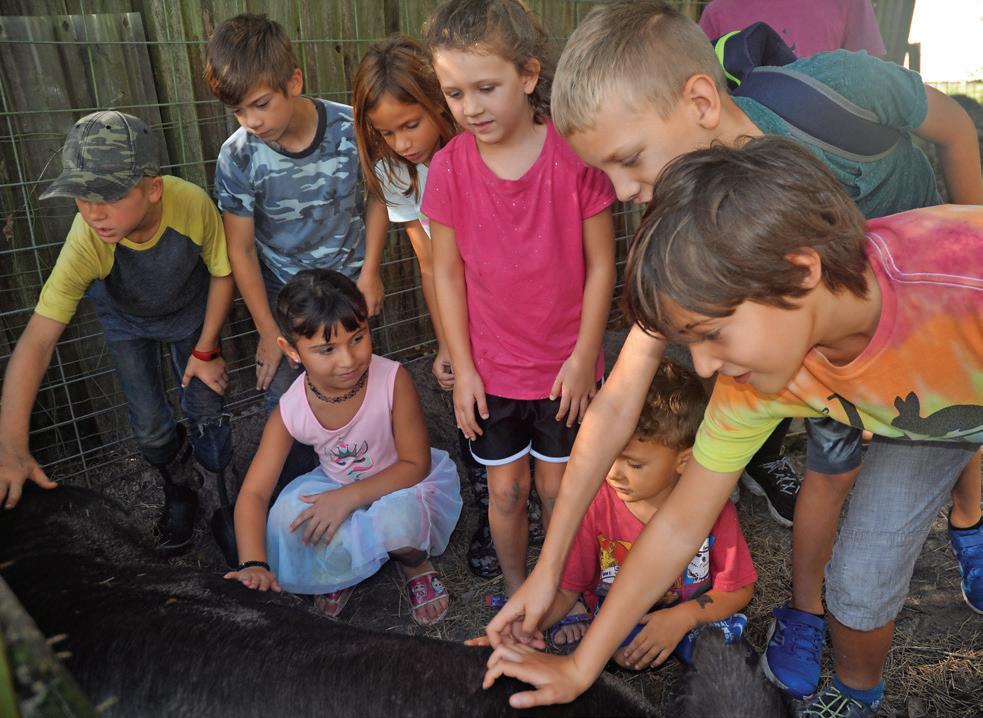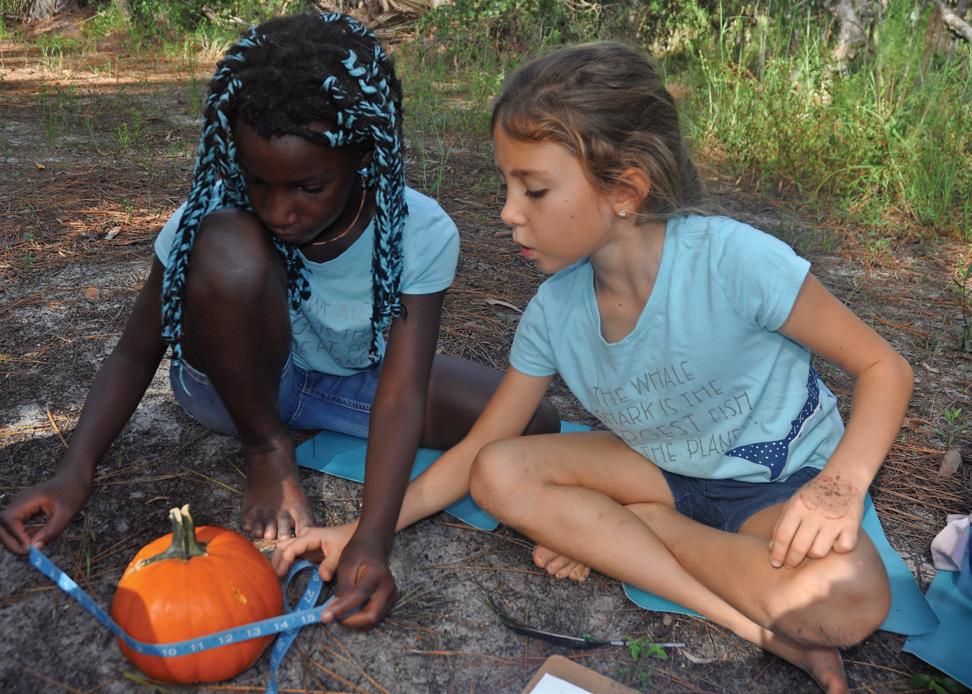
3 minute read
kid stuff
FARM LESSONS
Kids learn science and art through agrarian experiences in North Fort Myers. | STORY AND PHOTOS BY ANDREA STETSON
Advertisement
Children happily dash around picking up baby ducks and chickens, petting a cat and scratching the belly of a 600-pound pig. They grab hay to feed goats and cows, while also petting the farm animals. Science on the Farm at Shaker’s Acres South, a family farm in North Fort Myers, features a different hands-on science lesson each week. But before class begins, the children get to explore the farm and play with the animals.
“I like holding the chicks,” says Lili Webber.
“Feeding the animals,” adds her sister Mackenzie.
Torie Shaker has been hosting science classes at the farm for three years now and art classes for the past five years.
Each week has a theme. On a sunny October morning, the lesson was pumpkins. The children divided into groups and made predictions about its circumference, weight, how far it would roll, how many seeds were inside and whether it would


From left: Titus Mizelle, 8, feeds the goats at Shaker’s Acres South in North Fort Myers. • Ziggy Tuloa, 9, holds a baby chick during the Science on the Farm program at Shaker’s Acres South in North Fort Myers. The children get to play with and feed the animals before the science program each week. • The children pet a 600-pound pig named Esmerelda.
float or sink. Then they measured, weighed, rolled, put their pumpkin in lake water and finally cut it open to count the seeds.
“I love that they love to be in nature and with the animals,” says Katie Webber, who brought her three daughters and baby son. “We don’t have any pets where we live so this is great. I like that it is mixed ages so they can be with different ages. The older ones get to be the leaders. It is nice for me to have something where I know they are learning science. We do art as well.”
The art classes feature clay projects where the children learn to form their creations and how to glaze them.
Valerie Rowe brings her daughter Olivia, 7.
Each week there is a different theme. In the science classes, children have dissected owl pellets, studied spiders, examined trees, frogs and more. In December they will learn how the sun works and will study pine trees and lizards.
Classes are one and a half to two hours each.
“We are pretty flexible. It usually ends when they get hungry,” says

Above: Lili Webber, 9, shows her mother, Katie, and her brother, Starlo, 10 months, a baby chick during the Science on the Farm program. Left: Hattie Baudin, 8, and Penelope Shaker, 8, measure their pumpkin.

Kristin Baudin who helps with the classes.
On that October afternoon, the children learned that their heavy pumpkins floated. They found dozens of seeds inside and found weights ranging from 4 pounds to more than 12 pounds.
“My favorite is doing the science,” said Penelope Shaker, 8.
Most of the other children stressed that the animals were their favorites.
“I like feeding the animals,” said Hattie Baudin, 8.









